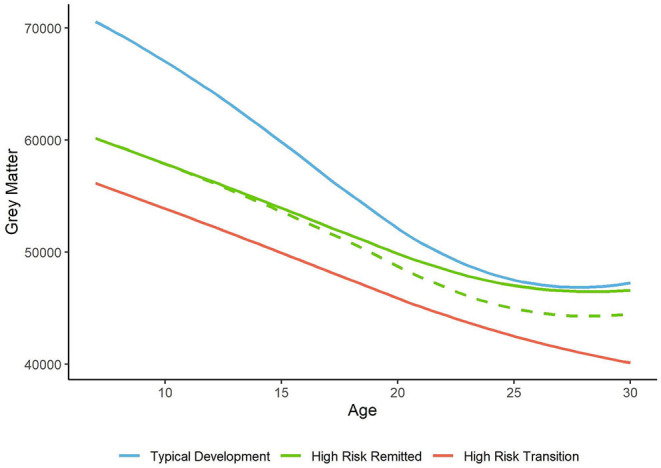Figure 2.

Hypothetical trajectories of whole brain gray matter. In typical development, gray matter volume and thickness reduce in late childhood, and plateau in mid adulthood [blue line, based on (9)]. In high risk subjects, gray matter volume and thickness is lower than healthy volunteers. In those whose symptoms improve this deficit may persist (dashed green line) or recover (solid green line). In those who transition to psychosis, lower gray matter is found at baseline and longitudinally compared to non-transition subjects (red line).
